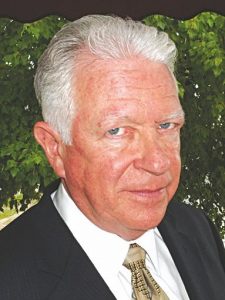
by David K. Bernard
To View the Entire Article, Click Here
To Download the Entire Article, Outline, or PowerPoint, Click Here
“And they continued steadfastly in the apostles’ doctrine and fellowship, in the breaking of bread, and in prayers…. And the Lord added to the church daily those who were being saved” (Acts 2:42, 47). (Scripture quotations are from the NKJV)
The New Testament church of the first century is our blueprint for revival and church growth today. To be part of the church of Jesus Christ and to have true spiritual growth, we must adhere to the message and experience of the apostles. Only then can we grow “with the increase that is from God” (Colossians 2:19).
Jesus Christ established the New Testament church by the apostles He had chosen. When He commissioned them to preach the gospel, He told them, “He who receives you receives Me.” (See Matthew 10:1-7, 40). Shortly before His crucifixion, He prayed for the apostles and then said, “I do not pray for these alone, but also for those who will believe in Me through their word” (John 17:20). The church is “built on the foundation of the apostles and prophets, Jesus Christ Himself being the chief cornerstone” (Ephesians 2:20).
In Acts 2, we find the following essential characteristics of the New Testament church, which we need today if we are to be apostolic:
- Apostolic experience: “And they were all filled with the Holy Spirit and began to speak with other tongues, as the Spirit gave them utterance…. Then those who gladly received his word were baptized; and that day about three thousand souls were added to them” (verses 4, 41).
- Apostolic doctrine: “And they continued steadfastly in the apostles’ doctrine” (verse 42). The apostolic message included the true humanity of Jesus Christ (verses 22, 30); the true deity of Jesus Christ (verse 36); the gospel of the death, burial, and resurrection of Jesus Christ for our salvation (verses 22-36); the personal response to the gospel by repentance, water baptism in the name of Jesus Christ for the remission of sins, and receiving the gift of the Holy Spirit (verses 37-39); and the life of holiness (verse 40).
- Apostolic unity and fellowship: “When the Day of Pentecost had fully come, they were all with one accord in one place…. And they continued steadfastly in the apostles’ doctrine and fellowship, in the breaking of bread…. Now all who believed were together, and had all things in common, and sold their possessions and goods, and divided them among all, as anyone had need.
So continuing daily with one accord in the temple, and breaking bread from house to house, they ate their food with gladness and simplicity of heart” (verses 1, 42, 44-46). The pooling of all resources was a temporary practice by the thousands of new believers from many towns and countries who had traveled to Jerusalem for the Feast of Pentecost and remained there after receiving the Holy Spirit, probably in anticipation of the soon return of Jesus. As time went on, the believers scattered, established congregations in many locations, and instituted a different financial system (I Corinthians 9:3-14; 16:2). Nevertheless the principle remained the same—giving generously with one accord as God enables, to meet the needs of the body (II Corinthians 8-9).
To View the Entire Article, Click Here
To Download the Entire Article, Outline, or PowerPoint, Click Here



